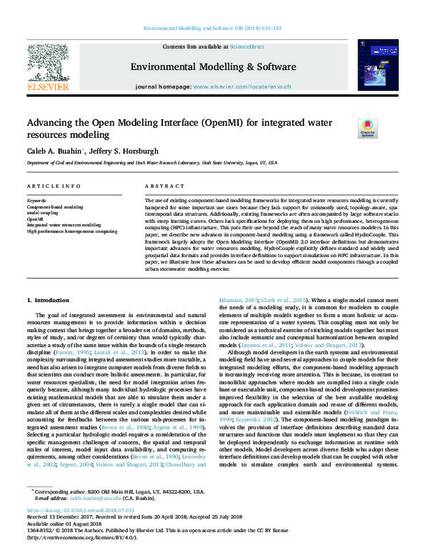
The use of existing component-based modeling frameworks for integrated water resources modeling is currently hampered for some important use cases because they lack support for commonly used, topology-aware, spatiotemporal data structures. Additionally, existing frameworks are often accompanied by large software stacks with steep learning curves. Others lack specifications for deploying them on high performance, heterogeneous computing (HPC) infrastructure. This puts their use beyond the reach of many water resources modelers. In this paper, we describe new advances in component-based modeling using a framework called HydroCouple. This framework largely adopts the Open Modeling Interface (OpenMI) 2.0 interface definitions but demonstrates important advances for water resources modeling. HydroCouple explicitly defines standard and widely used geospatial data formats and provides interface definitions to support simulations on HPC infrastructure. In this paper, we illustrate how these advances can be used to develop efficient model components through a coupled urban stormwater modeling exercise.
